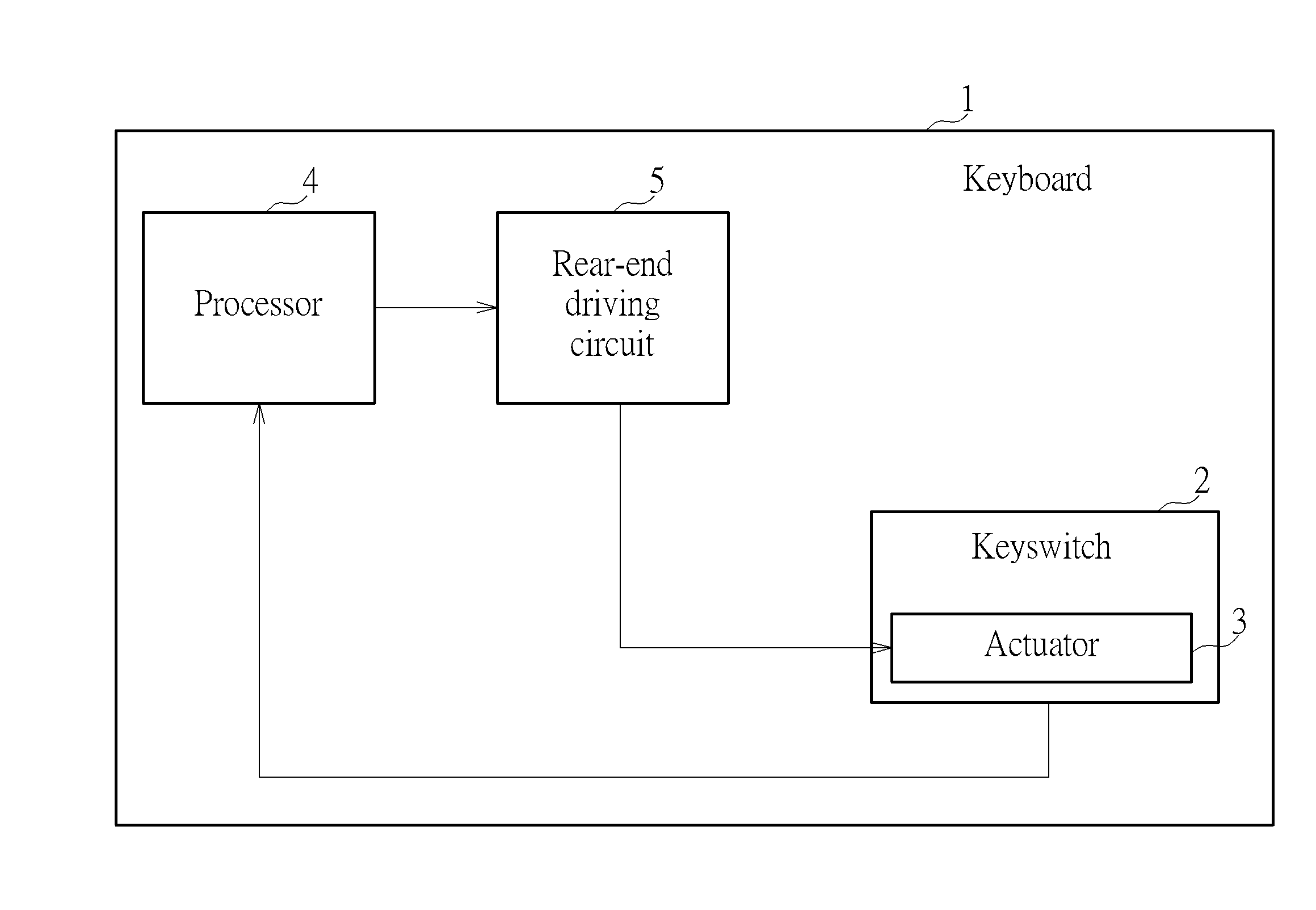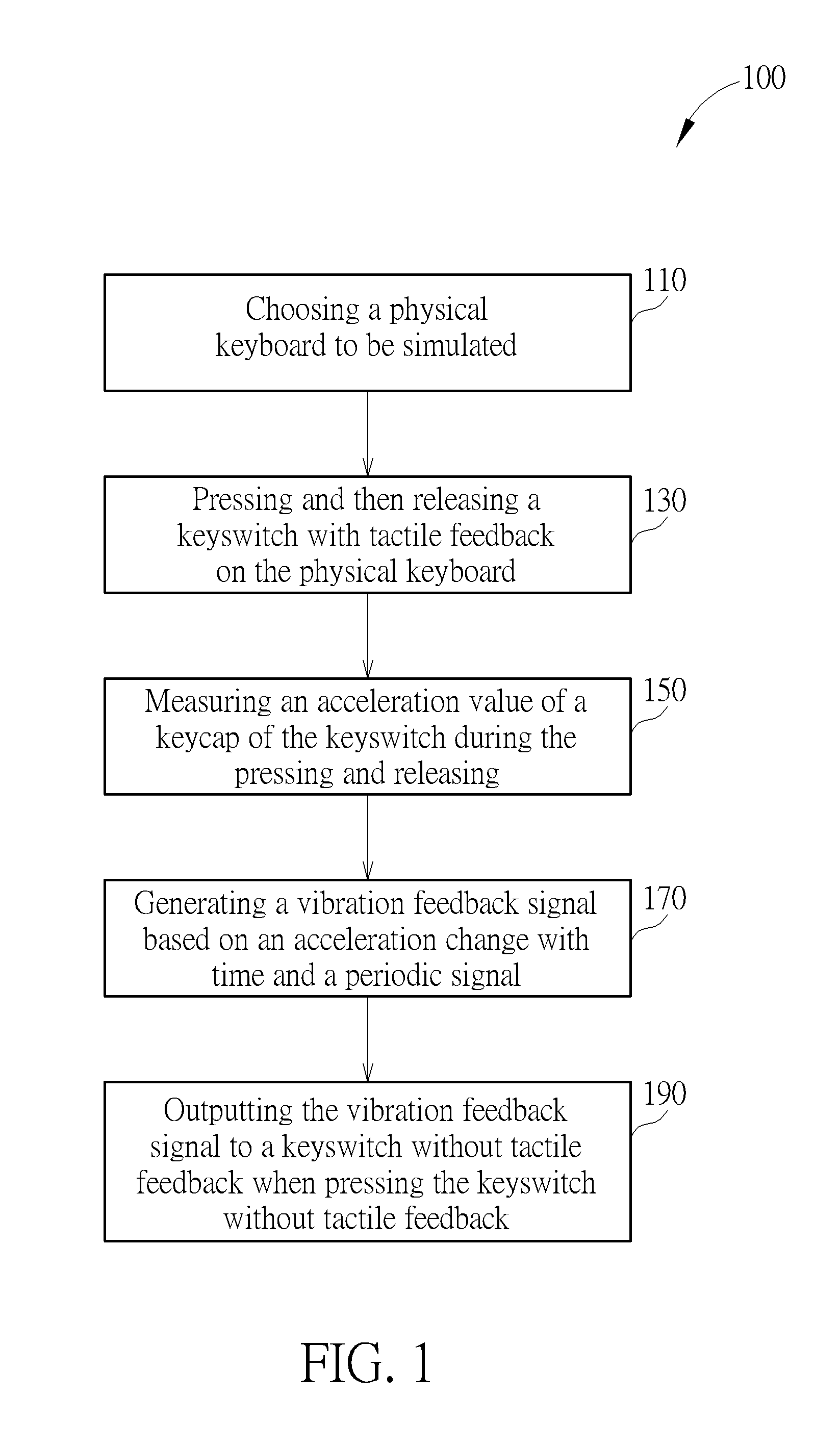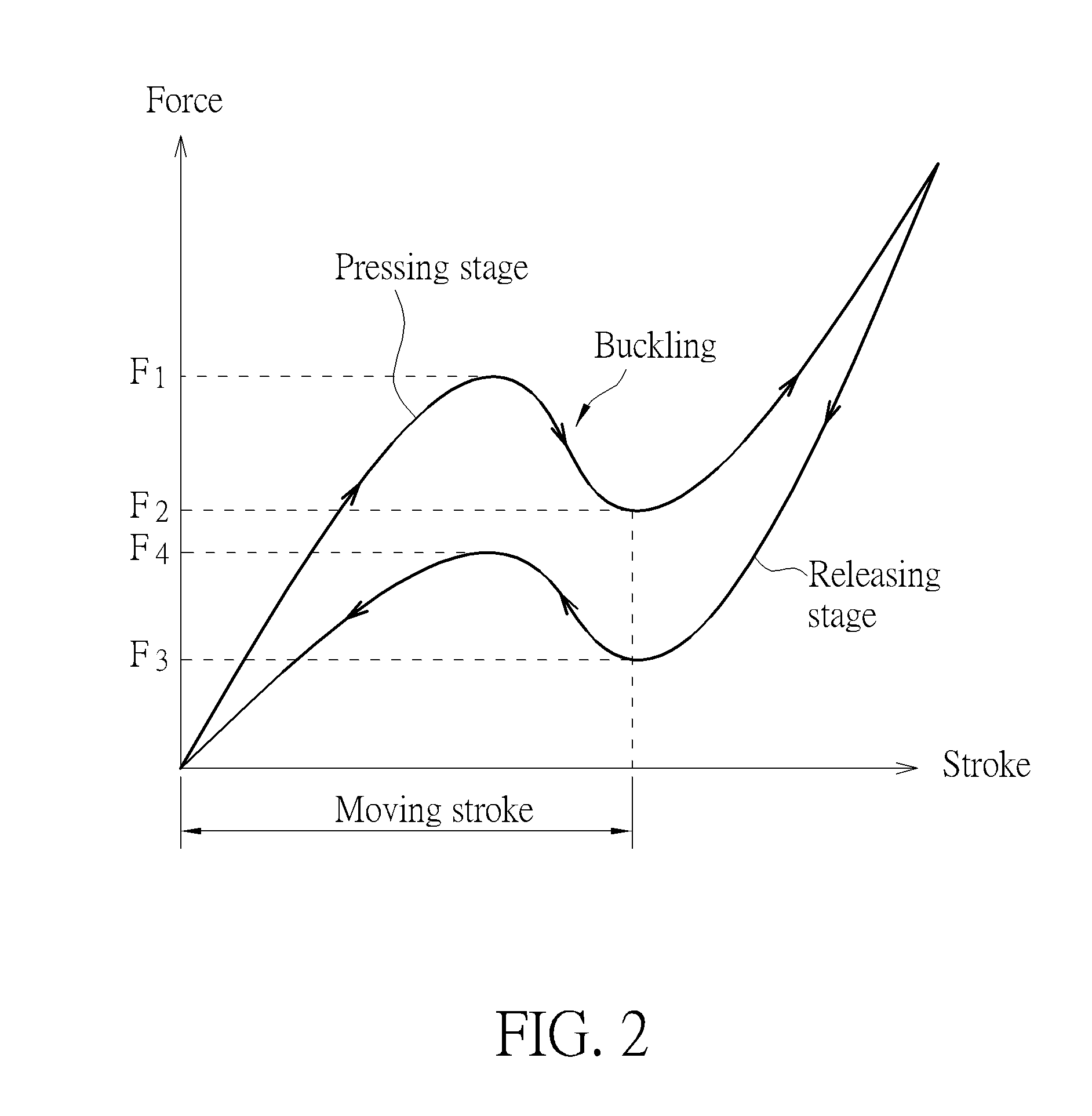Keyboard having tactile feedback
a technology of tactile feedback and keyboard, applied in the field of keys, can solve the problems of user difficulty in knowing, difficulty in applying the structure of traditional mechanical buttons with a larger stroke, and difficulty for users, and achieve the effect of good operation experien
- Summary
- Abstract
- Description
- Claims
- Application Information
AI Technical Summary
Benefits of technology
Problems solved by technology
Method used
Image
Examples
first embodiment
The First Embodiment
[0030]Please refer to FIG. 4. FIG. 4 is an illustration of waveform of the vibration feedback signal generated according to a first embodiment of the invention. In FIG. 4, the waveform 10 of the first embodiment only contains the acceleration change A measured in Step 150, which means the acceleration change A is directly used as the first type waveform 10 and the vibration feedback signal for driving the actuator 3, C=A. In FIG. 4, the vibration feedback signal C is stored in the processor 4 and can be further divided into a first vibration feedback signal 17 and a second vibration feedback signal 18, i.e., the acceleration change A can be divided into a first acceleration change of the pressing stage and a second acceleration change of a releasing stage. When the user presses the keyswitch 2, in the pressing stage, the processor 4 outputs the first vibration feedback signal 17 to the actuator 3 to generate a press vibration transmitted to the keyswitch 2 when t...
second embodiment
The Second Embodiment
[0033]The internal storage space of the processor 4 may be less consumed via storing in the processor 4 only the first vibration feedback signal 17, including the first interval waveform 11, the second interval waveform 12, and the third interval waveform 13, whereas the second vibration feedback signal 18 in the first embodiment, including the fourth interval waveform 14, the fifth interval waveform 15, and the sixth interval waveform 16, is abandoned and not stored in the processor 4. In such way, when the user presses the keyswitch 2, in the pressing stage, the processor 4 outputs the first vibration feedback signal 17 to the actuator 3 to generate a press vibration transmitted to the keyswitch 2 when the keyswitch 2 is during the course change from the released status to the pressed status. In the releasing stage, the processor 4 outputs the first vibration feedback signal 17 again to the actuator 3 to drive the actuator 3 to generate the press vibration aga...
third embodiment
The Third Embodiment
[0034]Please refer to FIG. 5. FIG. 5 is an illustration of waveform of the vibration feedback signal generated according to a third embodiment of the invention. In FIG. 5, the vibration feedback signal C of the waveform 20 of the third embodiment is generated based on a press model waveform and a release model waveform modulated by the periodic signal H, or the operational combination of the waveform and the periodic signal H.
[0035]Please refer to FIG. 6. FIG. 6 is an illustration showing the press model waveform and the release model waveform. The way of generating the press model waveform and the release model waveform is described as followed: The upper half of FIG. 5 is the acceleration change A, including a plurality of sections C1˜C6. Taking the direction of acceleration into consideration, the sectional maximal acceleration absolute value of each of the sections C1˜C2, C4˜C5 can be determined. The first section C1 has a sectional maximal acceleration absol...
PUM
 Login to View More
Login to View More Abstract
Description
Claims
Application Information
 Login to View More
Login to View More - R&D
- Intellectual Property
- Life Sciences
- Materials
- Tech Scout
- Unparalleled Data Quality
- Higher Quality Content
- 60% Fewer Hallucinations
Browse by: Latest US Patents, China's latest patents, Technical Efficacy Thesaurus, Application Domain, Technology Topic, Popular Technical Reports.
© 2025 PatSnap. All rights reserved.Legal|Privacy policy|Modern Slavery Act Transparency Statement|Sitemap|About US| Contact US: help@patsnap.com



